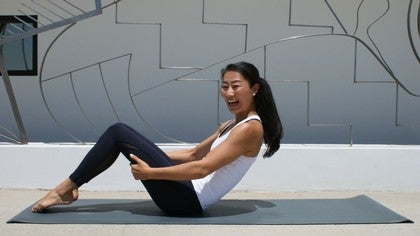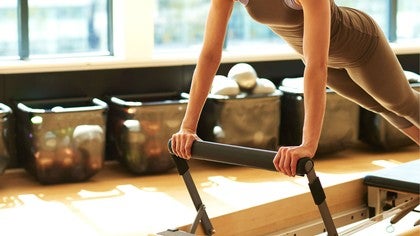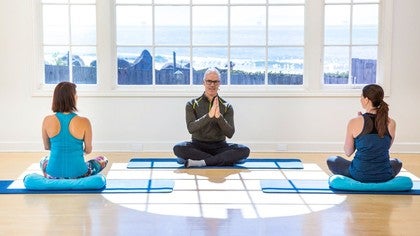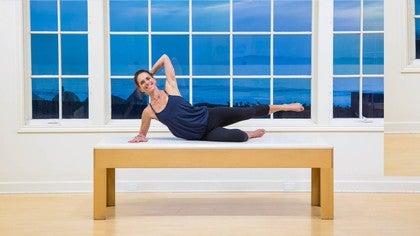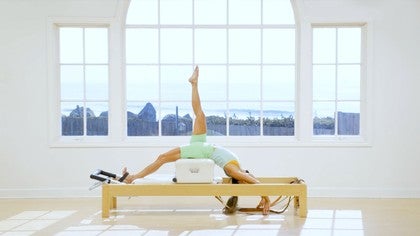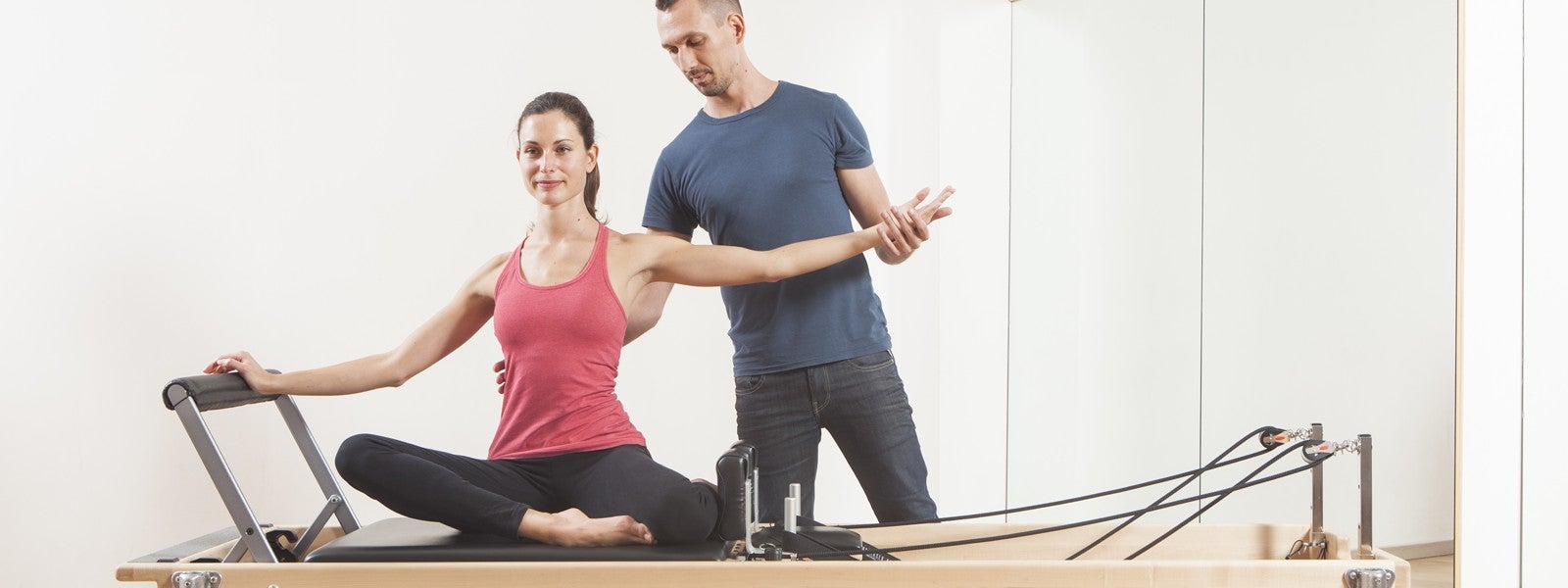
7 Pilates Mistakes Newbies Make and How to Avoid Them
So you’re finally heeding the advice of your friends (and potentially physician) regarding the countless scientifically backed benefits of a Pilates practice (increased flexibility, endurance, and improved posture, just to name a few), but you’re intimidated by the new realm of core activation, pelvic floor cues, and the sheer look of Pilates equipment. Never fear – we’re here to explain the key principles to follow and mistakes to avoid, whether you’re on the Reformer, Mat, or other Pilates apparatus, and to help you enjoy your first Pilates class while avoiding injury.
Mistake #1: Showing Up Unprepared for Pilates Class
What should you bring to Pilates classes? If you are taking a Reformer class, you may be required to wear sticky socks with rubber grips on the bottom. Check with your studio on their policies – you may have to purchase them at the studio if you do not bring your own. If you’re taking a Mat class, you likely will not need socks.
What should you wear in Pilates? Your ability to focus on the exercises and your teacher’s ability to see what you’re doing rely heavily on what you wear. Think of the last time you were in a business meeting in an uncomfortable outfit – you probably were not able to focus on the subject matter at hand. Dress for Pilates in clothes that are comfortable but not too baggy – your teacher will be looking for your pelvic and spine alignment. Opt for yoga, or even better, Pilates pants. Avoid zippers, pockets, or anything that might get caught in equipment.
Mistake #2: Moving Too Fast Through Pilates Exercises
Pilates was originally named Contrology, the study of control, so maintaining your teacher’s intended pace with control is key. More often than not at first, you will be moving slower than you might like, or than you think you should move based on other exercise modalities. The turtle wins the Pilates race; avoid using momentum and know that a stable, slow pace requires your stabilizing muscles to fire, and that is what makes Pilates so good, and so difficult!
Mistake #3: Breathing Without Intention
Most often in Pilates, you will be breathing within the diaphragm and ribcage with as little movement in the abdominals as possible. The focus should be on using the breath to expand the ribcage laterally (outwards, sideways) rather than vertically. A good way to get a feel for this is by placing your hands on each side of your ribcage. As you inhale, visualize your rib cage gliding apart. As you exhale, visualize your ribcage knitting back together. Or, imagine you have a heavy weight right on top of your torso (like an xray mat you would wear at the dentist), so that when you breathe, your chest is only able to expand outward, not upward. This is a bit hard to execute at first, so just make sure you are breathing as you learn the repertoire and the lateral breathing will come in time.
Mistake #4: Craning the Head, Especially During Core Mat Pilates Work
In Mat Pilates, you will likely be asked to lift your upper chest and back off the mat, requiring you to keep your head lifted too. In order to avoid stressing the neck, gaze slightly forward and up, with your chin in a position where it could hold an orange between your chin and chest. This chest lift position is repeated throughout Pilates. If you have trouble at first holding your head up, that is absolutely normal. You will eventually gain enough strength to execute these forward flexion exercises without neck strain. Take breaks, or use a small pillow initially if you feel discomfort.
Mistake #5: Tensing the Shoulders
When you’re focusing on strengthening muscles in the body, your shoulders are often the first to tense up in response, bunching up at the ears and closing the upper torso inward. Remember that laterally expansive ribcage breathing? Visualize your shoulder blades gliding down the back to lengthen the neck. In most exercises, thinking of rolling your shoulders up, down, and then back helps put them in the ideal place for movement.
Mistake #6: Mistaking Abdominal Strength for Abdominal Stability
Where most exercises start from the feet up (generally because you’re standing), Mat Pilates and Reformer Pilates all start from the center outward; Pilates teachers often refer to your abdominals and core as the second spine.
Abdominal strength and abdominal stability are not necessarily the same thing. You can gain abdominal strength by doing a thousand crunches per day, but that abdominal strength will not necessarily ensure that your torso is in proper alignment with your pelvis in a standing position – your abs could be nice and strong but totally off center, which ends up taxing your spine and lower back! The focus on deep abdominals in Pilates will create stability and strength.
Mistake #7: Over-Tucking the Pelvis Instead of Lifting
You’ll probably hear cues like “tuck the tailbone under” and “scoop the abdominals”– these are not misguided cues if you know exactly what the teacher is intending, but these cues can be hard to follow at first. Essentially, you do not want to compromise your back when you engage your abdominals, so be sure you aren’t sinking down in your spine when you pull your abdominals in or tuck the tailbone. Keep the back long; some teachers call this a lifted C-curve, but the “lifted” part will become second nature to you.
One effective method to assure your pelvis is “tucking” correctly without compensating the integrity of the rest of your core is the B-Line Method (often referred to as the bikini line or belt line, it’s – you guessed it – the place where your belt line hits): with your fingertips, find the place 2-3” below your belly button. Now, keeping the ribcage in direct alignment over the hipbones, engage your core to pull away from your fingertips.
When in doubt, lift, don’t tuck!
The Studio is a Safe Space.
When in doubt, always ask. Your teacher is there to guide you, so let them! Be patient with yourself; Pilates is a very specific method of muscle isolations and extensions that sometimes feel like tongue twisters for the body. You may find it helpful to untie these body-twisters by familiarizing yourself with the common terms used in a Pilates class or arriving at class 15-25 minutes early to voice your concerns with the teacher.
Comments
You need to be a subscriber to post a comment.
Please Log In or Create an Account to start your free trial.
